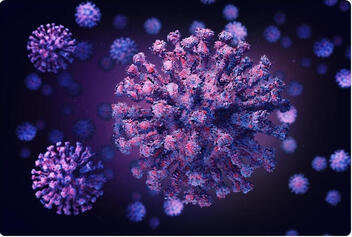What Is COVID-19?

Coronavirus Disease 2019, or COVID-19, is an infectious acute respiratory disease caused by the severe acute respiratory syndrome coronavirus 2 (SARS-CoV-2). Initially identified in Wuhan, China, COVID-19 rapidly became a global pandemic as of 30th January 2020 and is still ongoing.
Worldwide, around 8 million cases of COVID-19 have been confirmed with around 450,000 deaths (as of June 2020).
Main Symptoms of COVID-19*
According to the NHS (UK), the 3 main symptoms of COVID-19 are:
- Fever – a high temperature >37.8OC/100OF (~86-88% of reported cases)
- Dry Cough – a new continuous cough that occurs regularly throughout the day (at least 3 coughing episodes per 24 hours) (~69%)
- Smell and Taste – a noticeable new loss in the sense of smell and taste (variable estimates – data still emerging)
However, not all affected individuals may display all 3 of these symptoms. Often, 1 of the 3 symptoms may be sufficient. Furthermore, according to the CDC (US), additional symptoms may include 1 or more of the following symptoms, which may occur in a subset of affected individuals:
- Shortness of breath or difficulty breathing (~22%) – depends on the severity of disease i.e. in more severe disease this is very common
- Fatigue (tiredness) (~35-39%)
- Muscle and body aches (~16-36%)
- Headache (~12%)
- Sore throat (~12%)
- Nausea or vomiting (~4-6%)
- Diarrhea (~5%)
- Congested or runny nose (~3%)
Many of these symptoms are also the same for influenza (flu) and cold. The main distinction between flu and COVID-19 is that flu symptoms usually begin abruptly within 1-4 days whereas COVID-19 symptoms develop gradually over 2-14 days.
Symptoms such as a runny or congested nose, in addition to body aches and pains, are more common in flu than in COVID-19.
The symptoms of COVID-19 typically disappear within 14 days after initial symptoms, and this is the basis of self-isolation, or quarantine, as imposed by many nations to combat local epidemics.
Although for the vast majority of people, symptoms disappear within 14 days, there may be some cases where symptoms do not disappear and worsen that may require hospitalization.
*Note – as COVID-19 is a new disease and the global pandemic is still ongoing, the exact symptomatic statistics may change as more evidence emerges. Furthermore, more symptoms may be added to the list in the coming months.